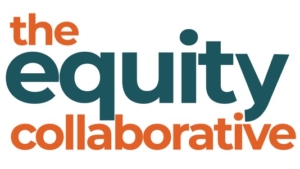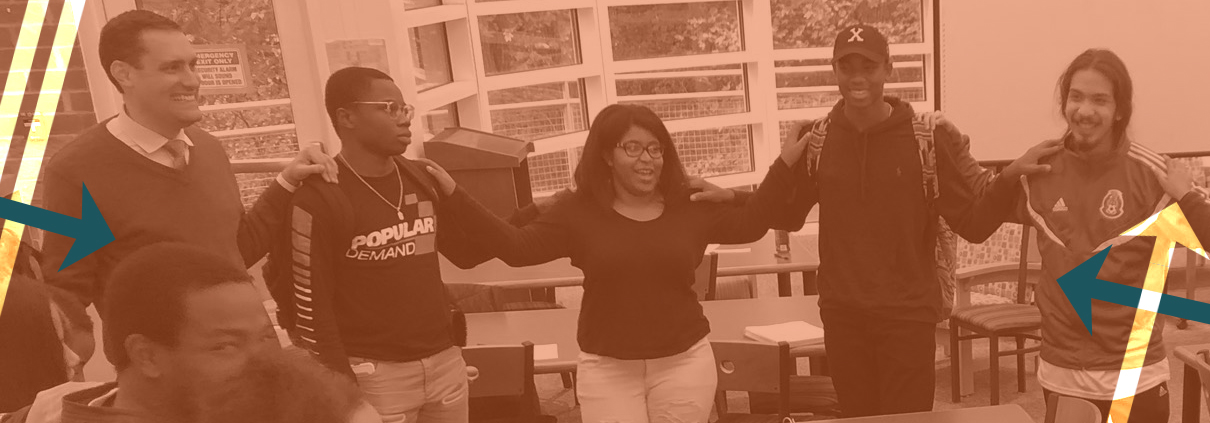The Enloe Five: Students Teaching Teachers about Equity
“How is it the case that we have this premier school that’s not serving and benefitting all students?”
That’s the question Dr. Will Chavis asked himself in 2016, when he became the principal of Enloe Magnet High School in Raleigh, North Carolina. It wasn’t a hypothetical question. He really wanted to know the answer. He also really wanted to translate that answer into practical solutions for equitable outcomes at Enloe.
Dr. Chavis raves about Enloe, and for good reason. It’s an International Baccalaureate school. It offers every AP test under the sun. It’s also enjoyed plenty of well-deserved acclaim over the years. As such, it attracts students from every nook and cranny of Wake County. It’s a majority-minority school—around 33 percent White, 28 percent Black, 22 percent Asian, and 15 percent Hispanic.
And yet, well, not everything’s so rosy. Dr. Chavis puts it very bluntly: “There tended to be a better experience for white students. Outcomes for black and brown students across every metric wasn’t comparable to those of their white counterparts.”
The suspension rates said so, the test results said so, the graduation rates said so, and the student surveys said so.
“That was the impetus,” he says.
The impetus for what exactly? Well, for several years of concerted effort to create more equitable, more culturally responsive classrooms.
Talking about race within a school environment isn’t easy. Even harder than having those conversations is having them across the student-teacher divide. Still harder than that is asking the students themselves to lead the conversations. And maybe hardest of all is turning those conversations into equitable teaching practices that actually have staying power.
At The Equity Collaborative, we’re big believers in the power of our Students’ Six model to do just that. We think we’ve convinced Dr. Chavis to believe in Students’ Six as well. Students’ Six isn’t a product. It’s not a hard and fast list of strategies, and it’s not a stricture. The Equity Collaborative doesn’t just hand over a group of bullet points and head straight for the exit. It took a lot of hard work, but Enloe ended up in a good place: a place where a group of students taught their teachers about equity. And what’s more, the teachers really listened to what those students had to say.
Let’s face it: as far as accomplishments go, that’s a big one.
Bringing Administrators and Teachers to the Table
Students’ Six was more of a finish line than a starting point for Enloe.
They started their equity work at the top, with the administrators. Dr. Chavis wanted to ensure that his leadership team shared a baseline knowledge about race. They read lots of articles. They had lots of discussions. Some of them were heated. Over time, they calibrated. That’s not to say they forced themselves to march in lockstep. Rather, they reached a consensus on a) what the data said about equity at Enloe, both quantitative and qualitative, and b) what they wanted the data to say about equity at Enloe.
From there, a group of teachers was brought into the fold. A truly multilayered process started to take shape. They, too, learned about equity from the ground up. When you’re talking about educational equity, it’s all too easy to think you’re speaking the same language when in fact someone else’s nouns are your adverbs and your adjectives are someone else’s verbs.
Dr. Chavis says, “It was only after that that we said, ‘Here we are trying to do this equity work and we don’t even have the right people at the table.’ That’s when we decided we need students to be a part of this work.”
They may have started with a top-down approach, but they came to realize that they needed a bottom-up perspective instead. Enter The Equity Collaborative, and enter Students’ Six.
Adding Students to that Table
Dr. Chavis knew that students’ voices were critical. The Equity Collaborative came on board to amplify those voices. Every school is different, and Dr. Chavis made it clear to us that Enloe students were both smart and brave. They knew what they wanted their teachers to deliver in terms of educational equity. And, given the right environment, they were willing to say it out loud.
“It was important to me to be a part of the groundbreaking work as a participant and not as a facilitator,” Dr. Chavis says. “If I were to lead it, it would have been ‘Chavis’s Initiative.’”
That’s not what he wanted. He wanted to be able to process alongside other administrators. He wanted those administrators to be able to process alongside teachers. He wanted teachers to be able to process alongside students. And ultimately, he wanted students to take on the loudest, most authoritative voice in the room. That’s where he relied on The Equity Collaborative.
“We wanted someone who could see it outside of what our comfort was,” Dr. Chavis says. “I needed someone with an outside perspective to say, ‘This is inequitable. We need to do something about this.’”
The Equity Collaborative worked closely with a representative group of Enloe students. We helped them adapt our baseline strategies for culturally responsive teaching to a very Enloe-specific environment. We gave them the reins. Once they had those reins, they went to work figuring out how to encapsulate a very big idea—educational equity—into a list of strategies that worked for Enloe Magnet High School specifically.
The Students’ Six and the Enloe…Five?
We call it The Students’ Six, but Enloe ended up with The Enloe Five. After much deliberation, they arrived at and elaborated on six strategies. They ended up combining the last two:
- Visibility—Making every student feel acknowledged and included in the classroom.
- Proximity—Using physical space to engage students and reduce perceived threat.
- Check for Understanding—Using strategies that ensure every student understands and can do what is expected of them.
- Address Race—Talking openly about racial dynamics and how they impact the student experience.
- Connect to Students’ Lives—Making linkages between classroom content and students’ experiences and perspectives.
- Connect to Students’ Futures—Helping students identify their future paths and using classroom experiences to guide students towards their personal goals.
Why did they combine those last two bullet points? Well, they reasoned that if you’re going to connect with my life now, you need to connect with who I’m going to be in the future. When you’re in high school, after all, you’re growing way too fast to consider one without the other.
Once the students put down their five strategies in writing, the student/teacher partnership could begin in earnest. In groups of two—one student and one teacher—the five strategies got dissected, put under a microscope, written and rewritten, put into graphical form.
“It was one of the most incredible things that I can remember in my tenure as an educator, to see the hierarchy go away,” Dr. Chavis says. “It was a back and forth. It was a conversation. Both groups were learning as they were going. And they were vulnerable enough to engage and have that experience.”
Then, Enloe used one of its professional learning days to get all the teachers, all the administrators, and all the student facilitators into one room. In that room, each student-teacher team spoke as a unified voice. They unpacked the five strategies. The students presented what they wanted from the teachers moving forward—visibility, proximity, addressing race, checking for understanding, connecting to students’ lives and future—and the teachers responded with what they could do to provide support. In the end, it was students teaching teachers.
The Enloe Five 2.0
All that was a couple of years ago. Cut to 2021. The students who made up the equity team that developed The Enloe Five have graduated. The work those students did has both traction and staying power, for sure, but Dr. Chavis says it’s a constant effort to keep The Enloe Five alive and well today.
“We have had to put some more energy and life into The Enloe Five, especially after this last year.” He’s referring to George Floyd, to BLM, to, well, 2020.
Dr. Chavis says it’s been important to embed The Enloe Five into structures that already existed—structures such as teacher evaluations and learning rounds. That’s where the traction comes, he says. The Enloe Five, like educational equity in general, does not exist in its own orbit. It’s not something the school goes to only when racial tensions make national headlines. Rather, it’s something Enloe has worked hard to integrate into its community as a whole.
“It’s our culture,” Dr. Chavis says.



